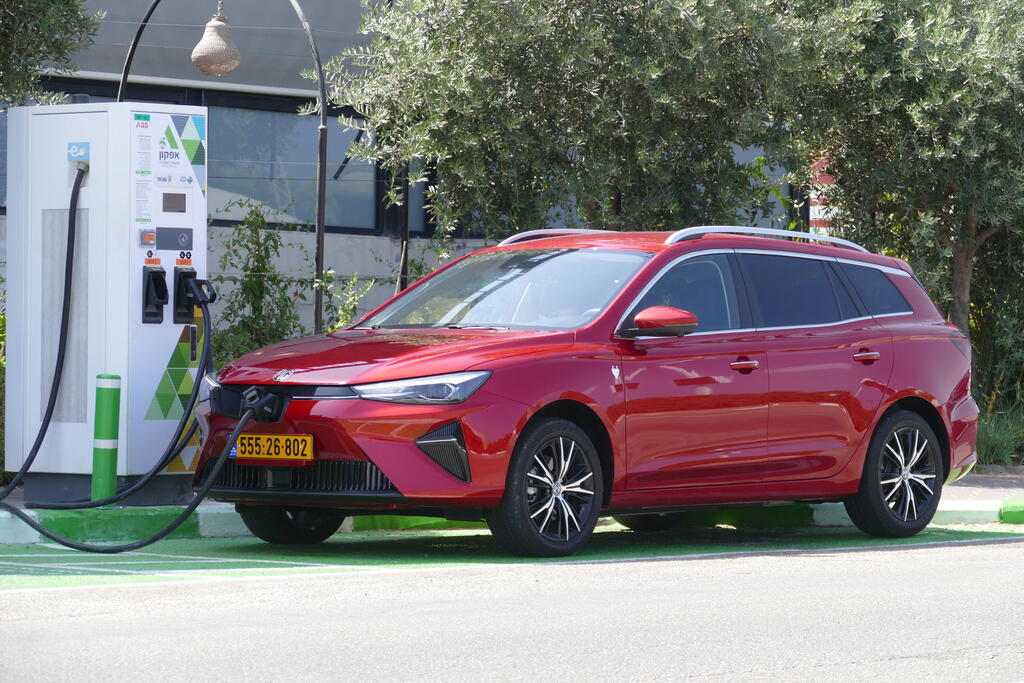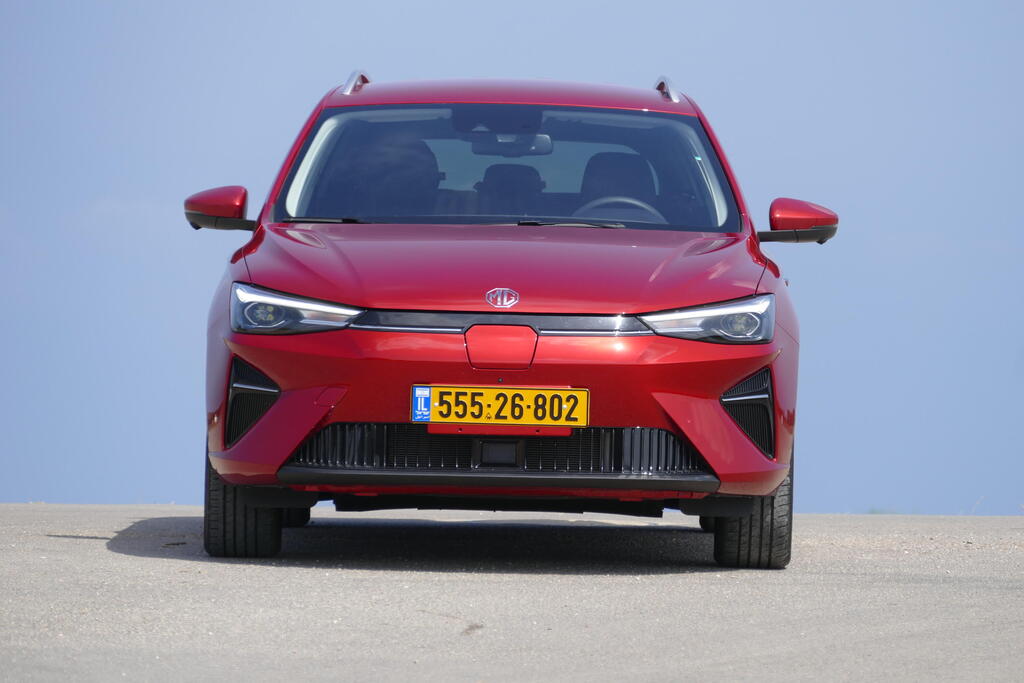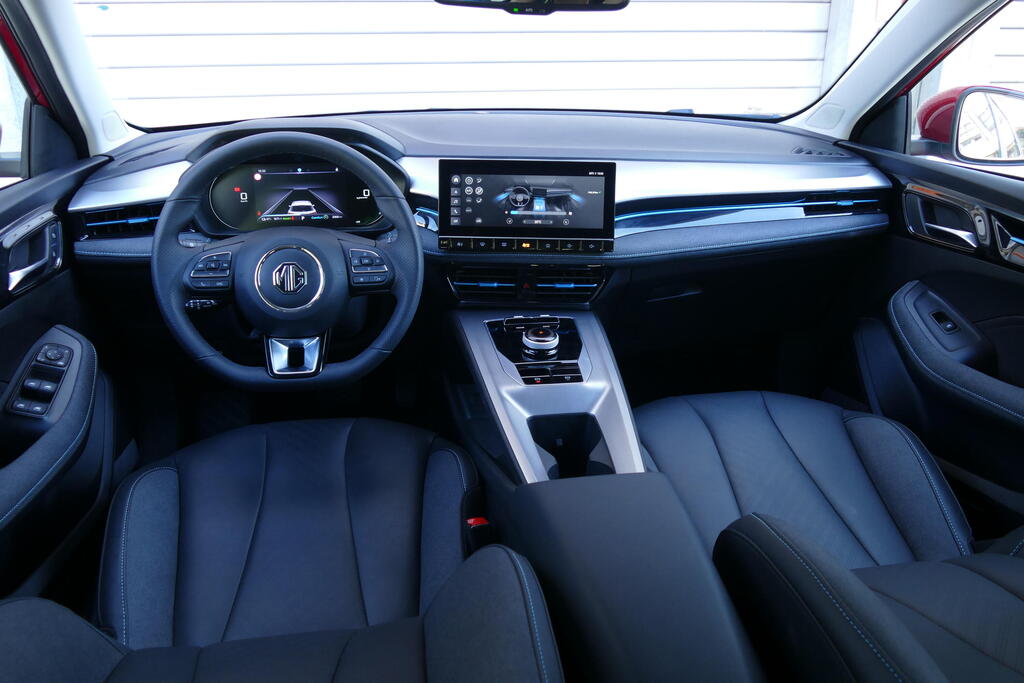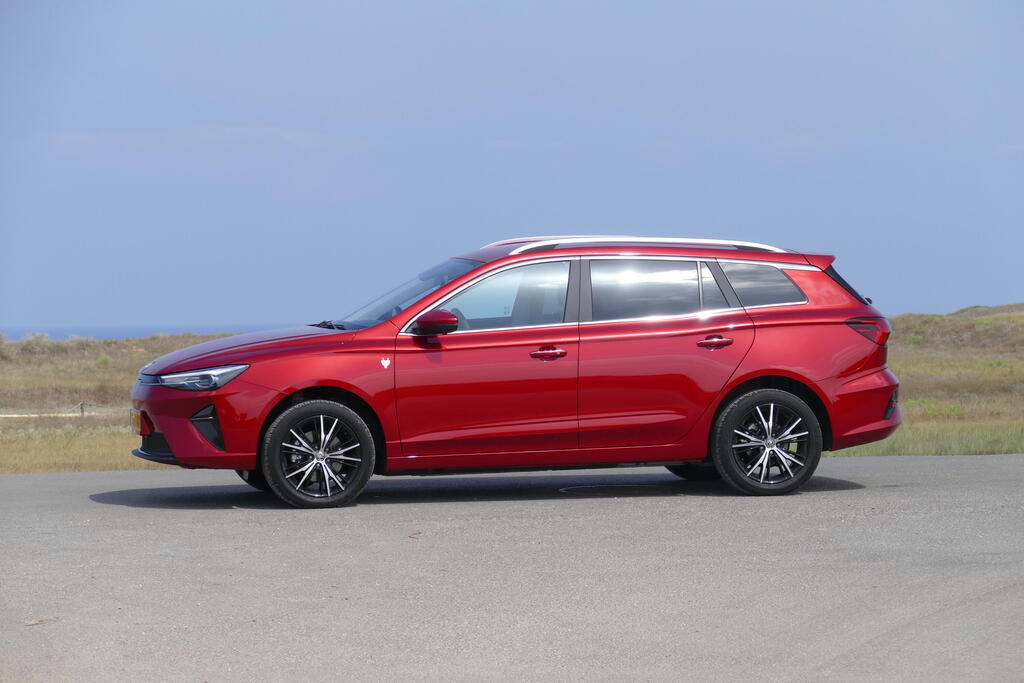Getting your Trinity Audio player ready...
Chinese automotive company MG was the first to offer an affordable electric car in Israel. Dominating electric car sales in 2020 was easy with its ZS EV model when no competitors were operating in the market. However, severe supply chain delays allowed Tesla, Geely and later BYD to replace the MG5 as top-selling vehicles.
More stories:
But MG has not given up entirely and is trying to regain its top position with no less than four electric car models, including the MG5, the first electric family station wagon available.
Today, the MG5 is a unique option for Israelis interested in an electric car with a large trunk that costs less than other models available. The electric version of the commercial Citroen Berlingo or larger cars like the Skywell ET5, Tesla Model Y, or Hyundai Ioniq 5 would demand tens of thousands of shekels in additional costs.
MG5 has a significant advantage in that respect. Among its benefits are a modern appearance, decent performance, and good driving comfort, especially within urban spaces.
But, it also has several drawbacks, mainly rooted in the fact that it is an older model, despite only now arriving on the Israeli market. It has mediocre dynamic abilities, poor noise isolation, and a lower driving range compared to other electric models in the same price range.
At the moment, the MG5 is significantly more expensive than its modern sister, the MG4, surpassing it in every aspect except for its trunk size. This suggests the price tag of the MG5 is geared towards leasing companies, that are used to buying at significant discounts and are likely to be the model’s main customers.
In terms of its appearance, the MG5 is an old car that was introduced in China about six years ago under the Roewe brand, as an electric version of a gasoline model. Two years ago, its front end received some major updates. The front lights are impressive, but the rest of its appearance is rather mundane.
The model’s interior is even simpler, with dark colors and metal-like finishes. The quality of materials is inconsistent. some of the interior is of good quality while others are made of cheap and flimsy plastic. The raised central console houses a supply of storage compartments.
The driver's environment includes a digital instrument panel (12.3") that displays data and a touch screen (10.25") similar to the one in the MG4 and is responsible for operating most of the car’s systems. but it is overloaded with menus that can be confusing to operate.
Unlike most Chinese cars, the MG5 has connectivity for Android and Apple devices. On the other hand, the driving position is too low, and the steering wheel adjustment may seem unsatisfactory for some, resulting in discomfort.
.
The floor is flat but is positioned high, bringing the passengers' heads closer to the roof of the car's interior. The air conditioning vents for passengers in the rear are located close to the floor and provide airflow only when choosing foot-level ventilation through the car’s climate control.
The trunk size is similar to the ZS (with a capacity of 479 liters) but is significantly smaller than that of other family station wagons with gasoline engines. Unlike modern electric cars, the MG5 does not have storage in the front.
The car is fitted out with surround cameras, faux leather upholstery with electric adjustment and heating for the front seats, and an option for a V2L adapter for supplying electricity to external devices. The safety features include autonomous braking, lane-keeping, and adaptive cruise control.
A single electric motor in the car’s front sends 156 hp to the front wheels and allows acceleration to 100 km/h in 7.7 seconds, being fast enough for regular family use but slower than other electric leisure vehicles like the BYD ATTO 3 or the Geely Geometry C.
The car’s regenerative braking system allows for three levels of intensity through a switch on the central console, a less convenient location than paddles behind the steering wheel. Even in the highest intensity level, "one-pedal driving" isn’t allowed, as commonly seen in modern electric cars.
A 61 kWh battery promises a modest driving range of 370 km. After about 650 km of testing, we achieved an average electricity consumption of 16.6 kWh per 100 km and a practical range of 340 km, in line with the manufacturer's information, but far from other electric cars in the same price range.
Fast charging (87 kW) allows for a 10% to 80% fill-up in 35 minutes, a result consistent with our measurements at a dedicated charging station.
The MG5 is based on an old and outdated platform, so we were not surprised by its mediocre performance. It provides comfortable driving in urban areas at low speeds, but the model’s lack of suspension creates discomfort on uneven roads at higher speeds.
Driving on a highway is noisy, likely because of the Maxxis tires which also contribute to the car’s relatively low grip of the roads.





